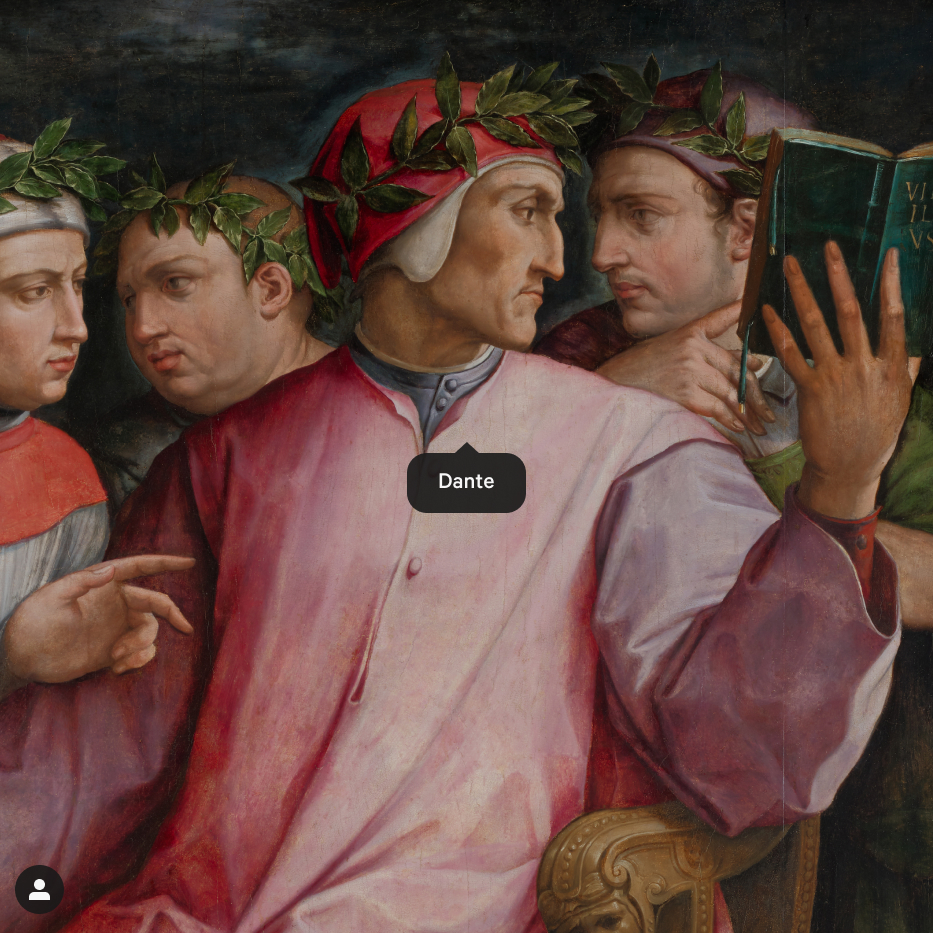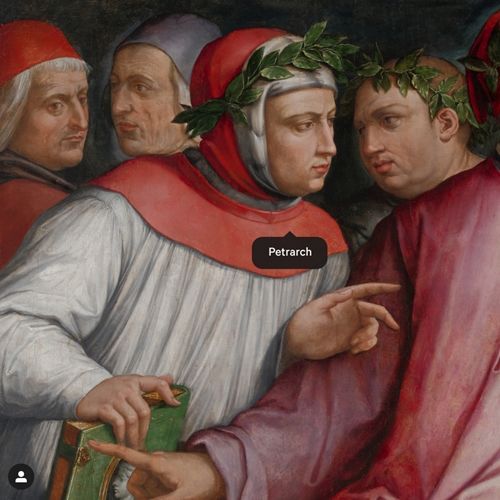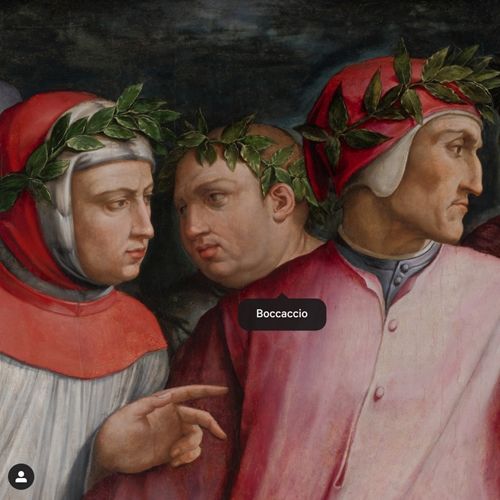Get lit: Meet the poets
You’ve heard their names: Dante, Petrarch, Boccaccio. You may even recall their most famous works: Dante’s Divine Comedy, Petrach’s love sonnets, Bocaccio’s Decameron. But what do you know know about them?
After nearly 700 years, these poets remain famous well beyond their native Florence. It’s a testament to their genius, of course, but also to the time and place in which they lived and the promotion their work got from political figures like Cosimo de’ Medici. Oh, to be a poet in Renaissance Italy.
In 1541, as part of Cosimo’s plan to make Florence great again, he oversaw the establishment of the Florentine Academy (Accademia Fiorentina), a powerful instrument for promoting his cultural agenda. At the Accademia, studying works by Dante and Petrarch was an institutional priority. Tuscan poetry was a thing! Books—especially volumes of poetry—regularly appear in Florentine portraits from this time. They establish the sitter’s literary cred but often also signal political views or social status.
 Dante (1265–1321) in particular was a local legend for Cosimo and his circle, and not just because of his way with words. When the Divine Comedy, which was written in Florentine dialect, was published, it spread the influence of Florence’s native tongue beyond the borders of Tuscany, further cementing the city’s status as a cultural powerhouse. This served Cosmo’s interests quite well.
Dante (1265–1321) in particular was a local legend for Cosimo and his circle, and not just because of his way with words. When the Divine Comedy, which was written in Florentine dialect, was published, it spread the influence of Florence’s native tongue beyond the borders of Tuscany, further cementing the city’s status as a cultural powerhouse. This served Cosmo’s interests quite well.
 For people in Renaissance Italy, poetry was part of pop culture. Petrarch (1304–1374), who was born about 40 years after Dante, wrote sonnets that were the Beyoncé lyrics of his day. His lines on love were quoted and imitated, and small volumes of his verses—a trendy accessory called a petrarchino—can be seen in painted portraits of stylish men and young women who wanted to look cute … and booksmart, too.
For people in Renaissance Italy, poetry was part of pop culture. Petrarch (1304–1374), who was born about 40 years after Dante, wrote sonnets that were the Beyoncé lyrics of his day. His lines on love were quoted and imitated, and small volumes of his verses—a trendy accessory called a petrarchino—can be seen in painted portraits of stylish men and young women who wanted to look cute … and booksmart, too.
 Boccaccio (1313–1375) was less exalted than Dante and Petrarch but still celebrated as one of the “three crowns of Florence.” In Giorgio Vasari’s painting Six Tuscan Poets, the three are joined by a fourth minor poet, Guido Cavalcanti, included as a kind of “plus one” to highlight their greatness. In fact, Dante appears to be instructing Guido by encouraging him to read the open volume of work by the ancient Roman poet Virgil.
Boccaccio (1313–1375) was less exalted than Dante and Petrarch but still celebrated as one of the “three crowns of Florence.” In Giorgio Vasari’s painting Six Tuscan Poets, the three are joined by a fourth minor poet, Guido Cavalcanti, included as a kind of “plus one” to highlight their greatness. In fact, Dante appears to be instructing Guido by encouraging him to read the open volume of work by the ancient Roman poet Virgil.
Speaking of Vasari’s painting, the title Six Tuscan Poets is a bit misleading, but it’s definitely catchier than “Three Major Tuscan Poets, One Other Poet, and Two Scholars (Cristoforo Landino and Marsilio Ficino).”
